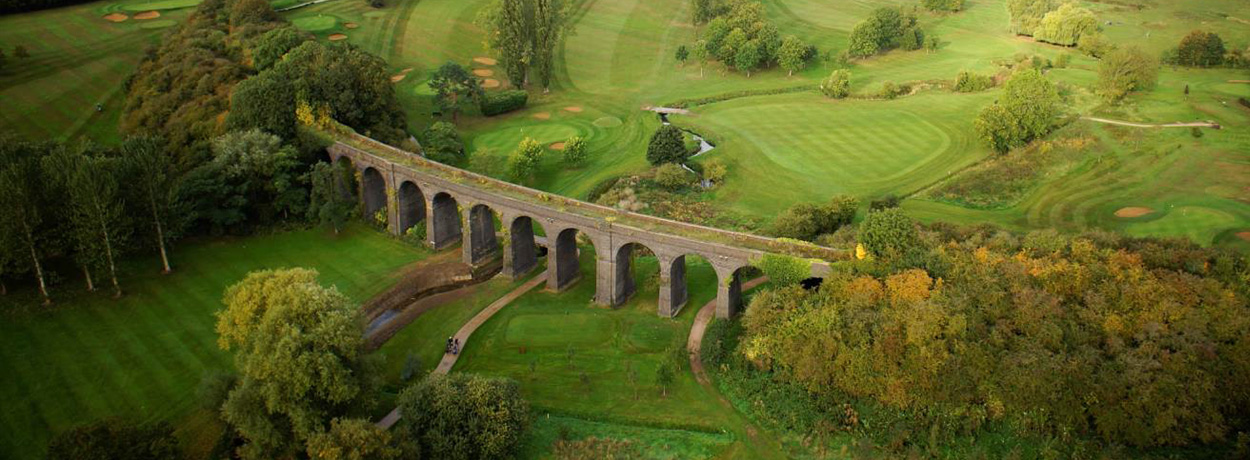
Rugby Golf Course Info
Agronomist Report May 2013
After a very positive visit I am pleased to publish a brief agronomy report from our consultant David Stansfield. I hope members find the report informative and take time to read the document which outlines our programme for the remainder of 2013 and early 2014. As always if anyone has any questions or constructive points they wish to make please feel free to pass these on to the course manager / director where we will be happy to respond or bring up at course meetings.
David Quinn PGA Class AA
Course Manager
May 2013
RUGBY GOLF CLUB
AGRONOMY REPORT ON THE GOLF COURSE
Inspection Date – 9 May 2013
As has been the norm this year, cold, dry weather has held back the regrowth of the golf course to its summer best. Nevertheless, there were still plenty of good points to be noted arising from an effective surface management programme over what has been a difficult twelve months. I saw positive results from localised course redevelopment work and drainage operations as well.
The greens looked somewhat dry, with uneven growth making for bumpy putting surfaces. Below the ground though, the soil was still quite moist 1-2cm from the surface, so overall it has been sensible to hold back on irrigation. This would have made cold soil colder still and retarded spring growth further.
Green surrounds were generally complete with a low level of damage due to wear and tear, aided by effective traffic management. At the 15th, the surround to the right of the green has been remodelled and drained with a good result to date. Installing a gully pot in the low point is a good way to get surface water away as quickly as possible.
The fairways were under much better control than last year, with neat presentation where mowing was underway. New drainage works at the 14th were seen as a good investment. Past flooding in this area has been a weak link in the Club’s ability to keep the course open for play. The works carried out will not stop all flooding in severely wet weather, but recovery will be far quicker than has been the case.
I understand the Club is still working on a plan to install automatic irrigation to greens and tees. I hope you will go ahead, because this will make a big difference to the average standard of presentation year-in, year-out, and will be an investment for decades to come. Of course, the biggest asset will be the capacity for effective irrigation of greens and this should be the primary target. Nevertheless, automatic irrigation of tees to provide the maximum growing season regardless of dry weather, and as such continuous recovery from wear and tear, will be a big advantage too. In the circumstances, I do not see a necessity for an approach watering capacity.
The putting surfaces were quite bumpy, primarily due to uneven growth between species, especially where the grass mix is zoned. For example at the 9th, where there were areas of good turf that was up to mowing height, but there were also flatter, yellow patches of Annual Meadowgrass. The Meadowgrass was at the low point of its growth cycle, awaiting a warm soil for spring recovery after winter damage to enable it to come up to 4.0mm. In contrast, at the 17th there was an even mix of Bentgrass and Meadowgrass, which provides a much better surface on average. Damage due to Fusarium Patch disease was generally a speckling of small spots in varying intensities from green to green, worst on the practice putting green. Overall it was not too bad, and certainly less than was the case last year, even at the 8th. This amount of damage will recover quickly as soon as new growth gets underway.
Additional damage was in the form of one or two small patches that have rotted due to standing water, e.g. at the 13th and 15th. However, I did not see these as a significant issue. They were quite marginal and so can be recovered by overseeding and natural regeneration without affecting playing performance.
The texture of the turf was much better than last year. With tighter mowing, the greens have not been allowed to get straggly. Good. Also pleasing to see were the improvements that have been achieved as a result of Rescue treatments, best at the 1st, 2nd and 18th.
Superficially the greens looked dry. However, there was enough moisture underneath for the grass to grow without irrigation. The primary restriction to good growth at that stage was a cool soil temperature (less than 10°C in the daytime and lower overnight). Adding cold water to cold soil worsens this position.
FUTURE PLANS
Overseeding will start after festival week continuing through to August, we will look to apply 2 / 3 applications of 100% bent seed with topdressing during these months to improve the surface quality.
Full Agronomy report is available in pdf or hard copy Please see Course manager / Director if required.
OTHER INFORMATION
COURSE INSPECTIONS AND TROLLY BANS
On Tuesday 19 March, following an inspection of the course, it was determined that, due to the extent of standing water following adverse weather over the weekend, only the “Dry 9” holes would be available with a “Trolley Ban” imposed. This was notified to members via our website prior to 8.00am to ensure they were aware as soon as possible of the restrictions on play during the day.
The inspection team, including the Course Director, Professional as Course Manager and head greenkeeper felt that conditions on the “Dry 9” were particularly bad in places that would warrant a “Total Trolley Ban” in the interests of members’ safety. The website notice, however, did not make this distinction from a normal “Trolley Ban” which allows certain members use of trollies, i.e. aged and or members with mobility difficulties supported by a doctor’s certificate.
In the event, a number of members in the “permitted trolley” group, and indeed some who weren’t, were not very happy to say the least when advised by the Assistant Professional and Secretary, that the total ban meant they were also restricted from use in the interests of their personal safety. At least one of these members decided to abandon his trolley and carry his clubs to avoid missing his game.
It is a requirement of Health and Safety legislation that the Club has arrangements in place to protect as far as is reasonably practicable the health and safety of its members. Course inspections and the decisions arising from these inspections are part of this process and the Directors of the Club give full and absolute support to the designated inspection team and fully endorse their decisions taken. Members of the Club are required to abide by these decisions also and failure to do so could lead to disciplinary action.
HOWEVER , it is evident from the above that there is some confusion over the reasons why inspections are required, how we decide the action to be taken, how we communicate the decision to members and who, if anybody, is exempt from the conditions imposed. The following is intended to inform members of these arrangements and the changes needed to ensure these arrangements are clear, explicit and unambiguous.
Course Inspections
As stated above, we have an obligation under Health and Safety legislation to make arrangements for the health and safety of our members. This is not an obligation we can ignore and the Health and Safety Executive has far reaching powers to ensure we comply, including the issue of prohibition and improvement notices and the imposition of fines and custodial sentences, including that of corporate manslaughter for the most serious offences.
When course conditions are poor, an inspection of the course is carried out to determine:
a) Is the course SAFE for members to play taking reasonable care?
b) Would there be excessive, UNACCEPTABLE DAMAGE caused to the course if members were allowed to play taking reasonable care?
c) Can alternative arrangements be made to permit play that avoids (a) and (b) above.
Obviously if (a) is NO the only course of action is to close the course. If (a) is YES there may be decisions relating to reasonable care, e.g. banning of trollies. In this case, a trolley ban means a total ban as if it is unsafe for fully able bodied members then it is equally unsafe, or more so, for members with mobility difficulties.
If (b) is NO the course would be declared open without restrictions. If (b) is YES there may be decisions relating to reasonable care, e.g. banning of trollies. In this case, either a trolley ban is imposed or members encouraged to carry clubs, if possible. However, members with mobility difficulties are permitted use of trollies under these circumstances.
(c) usually relates to the introduction of the “Dry 8” or “Dry 9” holes but is still subject to inspection as a course in its own rights and (a) and (b) above may still apply.
The decision of this inspection is communicated to members via the website. The decision is only relevant to the moment the inspection is made. Changing (weather, etc) conditions are monitored and further inspections can be made during the day and the website updated. The Inspection Team does not have the benefit of hindsight but will make every effort to ensure restrictions on play are kept to a minimum, bearing in mind the (a) to (c) factors above and the need to avoid encouraging play when conditions are unsafe or unsuitable.
Trolley Bans
Where a trolley ban is considered necessary in relation to safety , as (a) above, then the ban would apply to all members whether this is on the full 18 hole course or reduced course arrangement. For the avoidance of doubt , and to minimize ambiguity, the Inspection Team will conclude that the course is totally unsafe for all and the COURSE CLOSED decision will be made.
Where a trolley ban is imposed as a concern for avoiding course damage as (b) above, the following members will be permitted use of trollies at their own risk when a trolley ban is imposed:
(a) All members who are aged 70 and over, or
(b) Members under the age of 70 who have a mobility difficulty or otherwise and have a current medical certificate issued by their doctor confirming the need for the use of a trolley. This certificate must be deposited with the Membership Director and renewed annually (when paying annual subscriptions).
(c) In any event the use of “sit-on” buggies will be prohibited.
A list of members with doctor’s certificates will be maintained by the Membership Director. Members may be interested to know that currently the Membership Director is in possession of only 2 certificates!!!
Exempted members, as stated above, are permitted use of trollies at their own risk and should be aware that conditions on the course may change either for better or worse following the Inspection Team’s decision. These members must continually assess conditions at the commencement of and during play and take appropriate action according to actual prevailing conditions in the interests of their own safety.
These rules and procedures were approved by the Board of Directors at their Board Meeting on Monday 25 March 2013 and apply with immediate effect.
Steve Watts
Secretary
27 March 2013
Contact Us
How to Find Us
Rugby Golf Club Ltd
Clifton Road
Rugby
CV21 3RD
Tel: 01788 542306
Registered in England. 583045
VAT Reg. 272 3722 64






